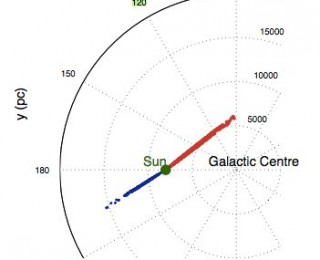
by Elisabeth Newton | Aug 28, 2014 | Career Navigation
I find that thinking about major undertakings and not knowing where to start can be extremely stressful. How am I supposed to know to be on top of something if I don’t even know I’m supposed to do it? In my experience, and maybe in yours as well, applying to grad school can be like that. This timeline is supposed to be a general outline for applying to astronomy graduate schools in the US generally from the perspective of a US-based student.
by Elisabeth Newton | Jun 2, 2014 | Daily Paper Summaries
The summer meeting of the American Astronomical Society is close to home again for this Astrobites author: the 224th meeting of the AAS is taking place in downtown Boston. Summer is the smaller of the two annual AAS meetings, and (sadly!) you won’t see too many Astrobites authors wandering around Copley Square this week. Because of that, we won’t be suspending our regular posting schedule as we’ve done in the past.But never fear, you can still follow AAS 224 from afar! As in previous years, we’re covering some of talks on twitter, and you can check out the AAS 224 hashtag for updates from all the conference attendees. Our liveblogging will be making a return this AAS as well, and we’ve decided to try out using Facebook as a liveblogging platform. You can follow our updates on the Astrobites Facebook page. Several of us will be giving presentations at the conference. Stop us and say hello! Our presentations are listed below, ordered chronologically:Courtney Dressing, Oral presentation 113.01 How Close are the Nearest Transiting Exoplanet Systems? Updated Planet Occurrence Rates from Kepler & Implications for TESS Monday 2:00pm – 3:40pm; St. George AB* *if you missed Courtney’s talk today, you can always find her to ask about it!Ben Montet, Oral presentation 314.04 Transit Timing Observations of a Hierarchical Triple M Dwarf System Wednesday 2:00pm – 3:30pm; St. George ABAllyson Beiryla & Elisabeth Newton, Poster 320.05 Harvard Observing Project (HOP): Undergraduate and graduate observing opportunities Wednesday 9:00am – 6:30pm; Essex Ballroom and America FoyerIan Czekala, Poser 322.01 A Novel Tool for the Spectroscopic Inference of Fundamental Stellar Parameters Wednesday 9:00am – 6:30pm; Essex Ballroom and America FoyerTanmoy Laskar, Poster 421.08...

by Elisabeth Newton | Feb 1, 2014 | Daily Paper Summaries
Title: Solar System evolution from compositional mapping of the asteroid belt Authors: F. E. DeMeo and B. Carry Institution: Harvard University, MIT Status: Published in Nature ReviewsIn the 1980s, astronomers and planetary scientists thought the Solar System was a well-ordered place. Planets formed in circular orbits and stayed there. The compositions of the planets were dictated by the composition of the disk of gas and dust out of which they formed. The materials in the disk available to form both planets and asteroids varied with radial distance because it was hotter closer to the Sun. This in turn neatly explained the architecture of the inner and outer Solar System. The same picture made sense when scientists looked at asteroids: asteroids of different compositions (types) were grouped together at different distances from the Sun (Figure 1). Asteroids, like planets, were thought to have formed in one part of the Solar System and stayed there.As new observations have been made, we’ve had to revise the 1980s picture of ordered planet formation. Efforts to explain the structure of our Solar System drove the community to adopt a more chaotic view of planet formation, one in which planets’ orbits can change dramatically and smaller bodies like asteroids can be flung about. One highly influential and successful model for planet migration in the Solar System, the Nice model, has the giant planets undergoing rapid migration and scattering smaller objects throughout the Solar System.Our knowledge of the composition and distribution of asteroids has developed along with theories of planet migration. A decade ago, a few rogue asteroids were known to be “polluting” the main asteroid belt: while located in...

by Elisabeth Newton | Dec 11, 2012 | Daily Paper Summaries
I’ve got pretty bad eyesight. If I take off my glasses and look at the flowers on my window sill, they look like a fuzzy yellow blob. But with glasses, the petals and the patterns cast on them come into focus. This is how I felt when looking at the new observations of the debris disk around AU Mic. Putting on our ALMA glasses, the fuzzy debris disk around AU Mic is sharpening into something surprisingly consistent with our own Solar System.

by Elisabeth Newton | Nov 29, 2012 | Daily Paper Summaries
“Galactic archaeology” is the term that has come to refer to using the motions and chemical compositions of stars of different ages to learn about the history of the Milky Way. It seems to me that “galactic paleontology” might be a bit more accurate. I hope to see galactic archaeology v. galactic paleontology fought out in the comments!




